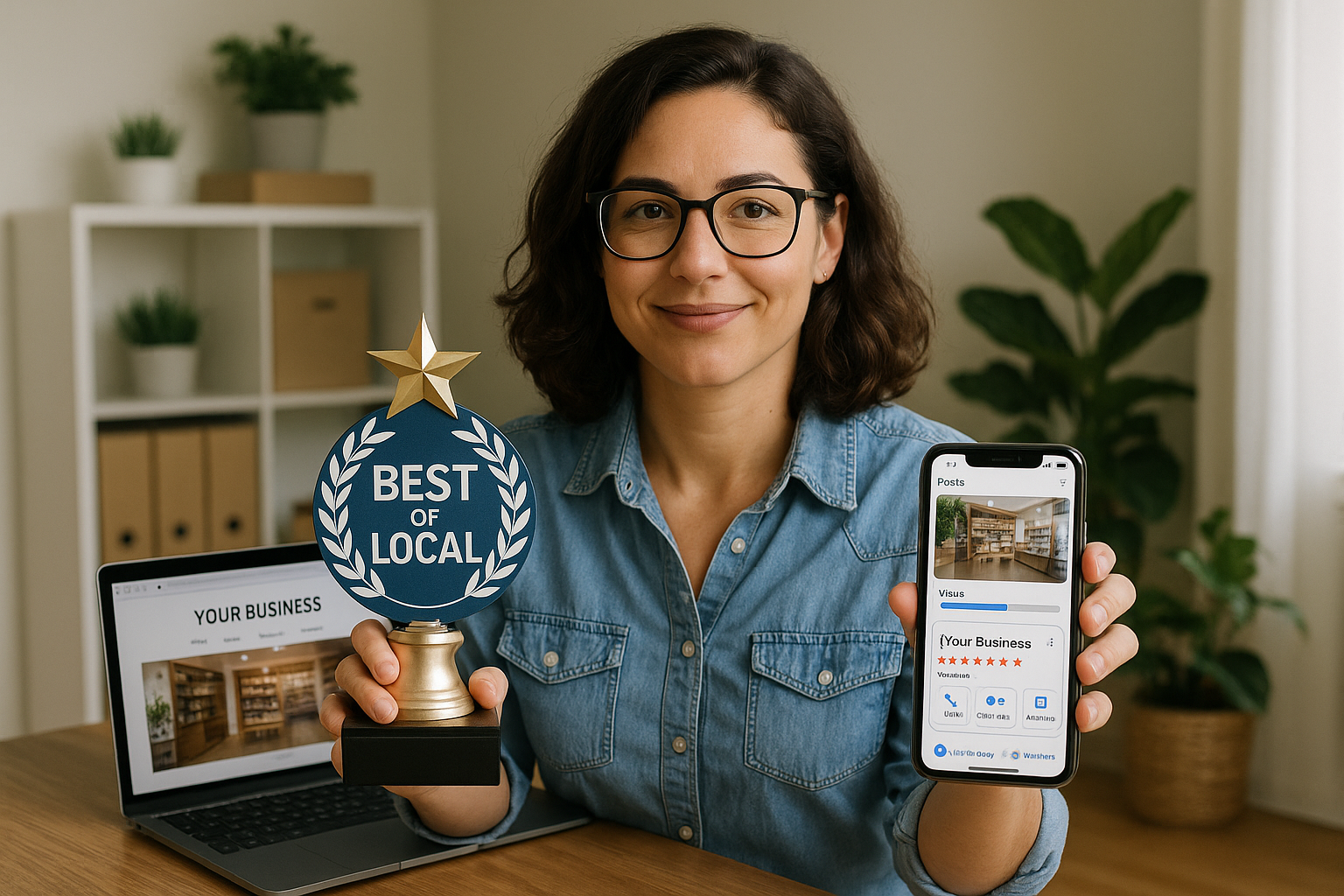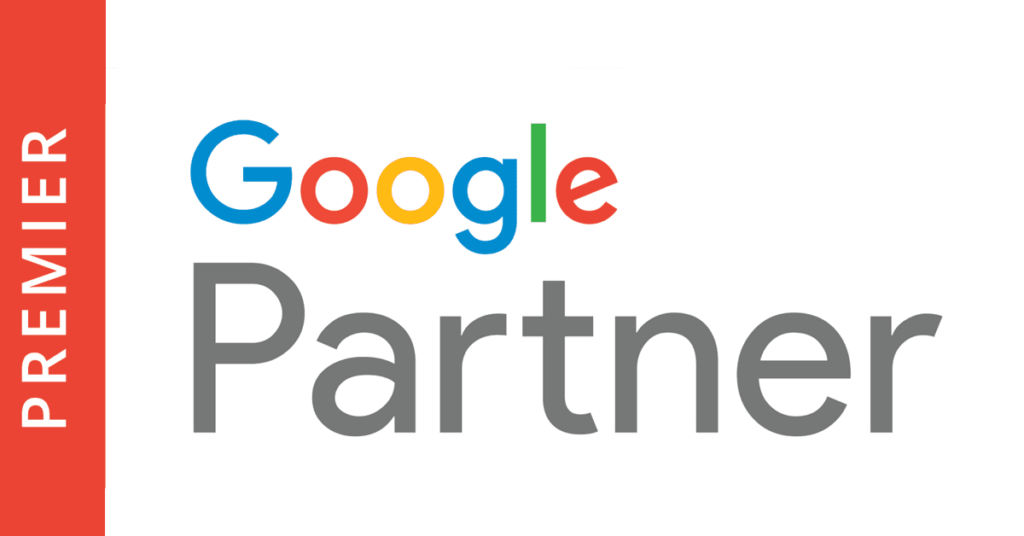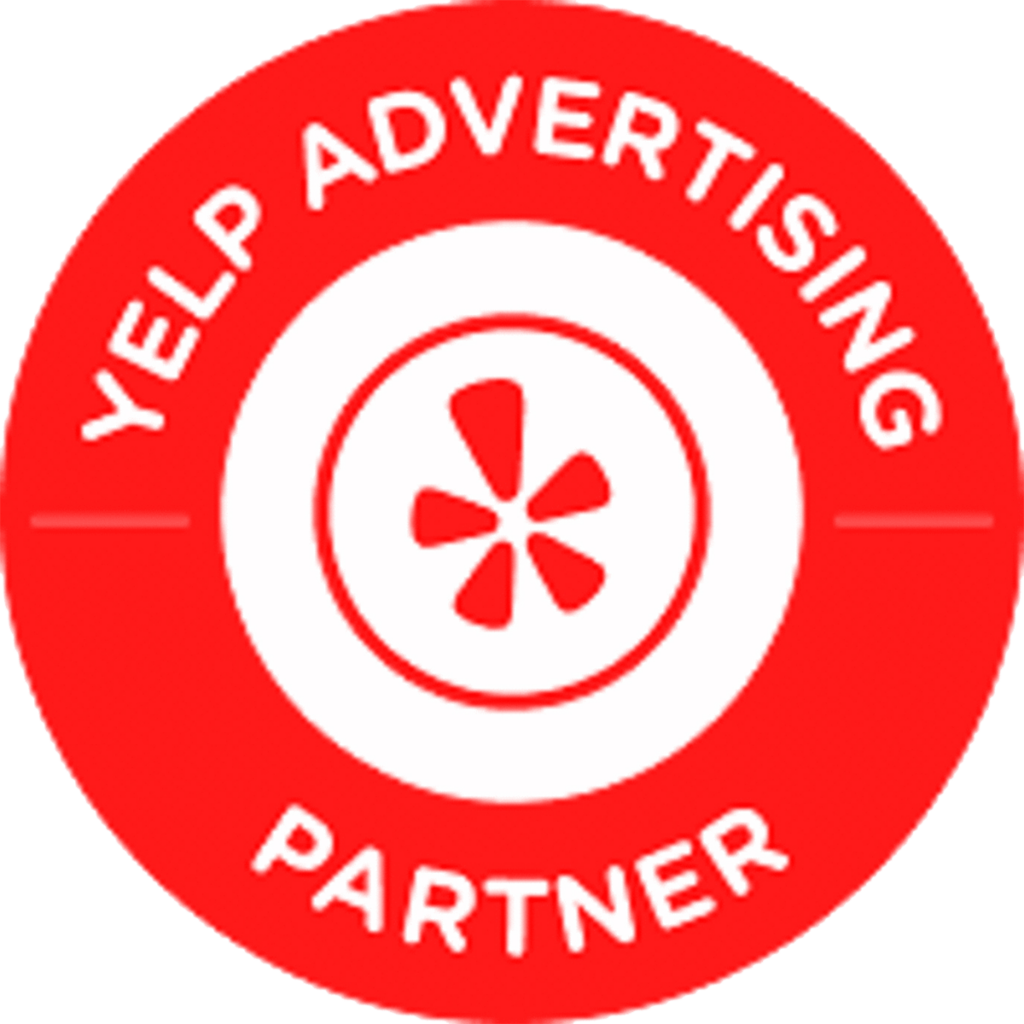If you want more local customers without throwing cash at ads, build a neighborhood guide that your neighbors actually use. Think hidden gems, real parking intel, transit details, family tips, plus a tidy calendar of what is happening this month. The payoff is sweet. You earn local backlinks from community sites and partner pages, your Google Business Profile gets more action, and your brand starts to feel like a local friend who knows every alley and patio. Grab a coffee, we are going to own your block with a guide that wins searches and earns trust.
Why hyperlocal guides work
Your customers search like locals. They ask for the best burger on Pine Street, where to park near the ball field, or what is happening this weekend near the riverfront. Generic city pages rarely help with those micro questions. A hyperlocal neighborhood guide does. It answers real on the ground questions with specifics that reduce friction for residents and visitors. That kind of utility builds authority and loyalty.
There is also a backlink secret baked in. Neighborhood associations, school calendars, community blogs, and small media frequently link to practical local resources. A guide that features their events and businesses becomes a natural resource page they want to reference. That means new referring domains from sites that send real foot traffic and search signals.
If you want a deeper foundation on the plumbing behind this strategy, check our primer on Local SEO basics. It covers Google Business Profile, NAP consistency, schema, and measurement. Then read our take on How backlinks boost local SEO to see why a few quality local links can move you up faster than a bucket of random citations.
What your guide must include
Your guide should act like the helpful friend who knows where to park when it rains, which patio has shade by four, and who will hand you a kid friendly tip before you ask. Think utility first. Keep the tone local. Use real names for streets, lots, parks, and small landmarks. Add map pins and quick answers. Below is a build sheet you can follow.
Hidden gems and businesses to spotlight
Feature eight to fifteen local spots. Mix food, coffee, parks, shops, art spaces, and service pros. Write short takes that include why locals love it, best time to go, one insider tip, hours, and a link to their site. Add a photo and a map pin. Then send a friendly note to each owner with a link to the guide and a small social image they can share. This is a simple way to earn shares and links.
To help you shape your list, here is a sample set for a fictional area we will call Maple Heights. Use this format for your real neighborhood.
1. Bluebird Coffee
Morning coffee spot with a smooth house roast and a quiet back patio. Best at eight in the morning on weekdays. Ask for the cinnamon honey latte. Hours seven to two daily. Map pin 40.7128, 74.0060.
2. Pine and Pie
New York style slices plus a square pie that sells out by seven. Locals love the lunch special. Hours eleven to nine. Map pin 40.7136, 74.0052.
3. Maple Heights Park
Shaded playground, open fields, and picnic tables. Dogs on leash. Restrooms by the north lot. Open sunrise to sunset. Map pin 40.7140, 74.0072.
4. Riverwalk Bike Fix
Quick tune ups and rentals by the hour. Friendly staff. Ask about the greenway loop map. Hours ten to six. Map pin 40.7131, 74.0038.
5. Cellar and Vine
Tiny wine shop with a local label section. Free tastings on Fridays after five. Hours noon to eight. Map pin 40.7122, 74.0045.
6. The Little Taco Stand
Parked beside the mural wall on Third. Try the birria taco with consomme. Open most days eleven to seven, cash friendly. Map pin 40.7119, 74.0069.
7. Bright Roots Market
Farm share pickup and local goods mini market. Family friendly. Saturdays nine to one. Map pin 40.7152, 74.0058.
8. The Attic Bookshop
Used and new, staff picks in the front room. Story time for kids on Sunday at ten thirty. Hours ten to six. Map pin 40.7139, 74.0041.
9. Side Door Studio
Drop in pottery class with a two fire option. Book ahead on weekends. Hours twelve to eight. Map pin 40.7127, 74.0029.
10. Community Kitchen
Lunch counter with soups and a pay it forward board. Locals pay for extra meals as a gift. Hours eleven to three. Map pin 40.7146, 74.0034.
Use short headers for each item. Add links to the business websites. Include one human detail that shows you actually went inside. Then tell every featured business that they are in your guide. Many will link it on their news page or in a menu item. That link is gold for local authority.
Parking tips and access
Parking stress ruins visits. Fix it in your guide. Spell out street rules, permit hours, time limits, and the best lots by time of day. Name cross streets. Mention meter rates if they change by zone. Point to a printable map or a simple PDF that highlights free two hour spots, ADA stalls, bike racks, and rideshare drop zones. Add a bold note for game days or concert nights if rates change. Town parking pages and neighborhood associations often link to clear parking resources, so this is a shortcut to earn local backlinks while helping real people.
Template you can adapt:
Weekday morning parking. Best street parking on Oak between Third and Fifth before nine thirty. Meters start at nine. Two hour free spots on Linden between First and Second. ADA stalls at the north entrance of Maple Heights Park by the playground gate.
Evening parking. After six, the library lot opens to the public. Watch for event signs, the church across from Pine and Pie posts a sign if they have a meeting night.
Weekend parking. Farmers market on Saturday blocks the south lane of Maple Avenue from seven to one. Use the Riverwalk lot after nine.
Add one line on safety. Well lit blocks near Main feel better after nine. People appreciate that level of care.
Seasonal events and calendar
Make the event section live. Either embed a calendar or manually curate a monthly list. Include a short form so organizers can submit their events. That single feature earns links because event pages often add a Resources section that points to helpful calendars. You will thank yourself later.
What to include for each event. Name, spot, time, ticket link if needed, family note, and a parking tip. Use clear times. If it repeats weekly, note the pattern like every second Saturday.
Examples for Maple Heights:
Summer Night Market at Maple Heights Park, five to nine, second Friday June through August. Free entry. Live music at seven. Bring a blanket. Best parking near Oak and Fourth after five thirty.
Library Story Hour every Tuesday at ten. Free, toddler friendly. Park in the back lot and use the south entrance.
Greenway Ride meets at Riverwalk Bike Fix, Sunday eight sharp, twelve mile loop. Helmets required. Coffee at Bluebird after the ride.
Accessibility, transit, and family tips
Make your guide welcoming. List transit routes, drop off spots, stroller friendly sidewalks, ramps, curb cuts, and elevator access where relevant. If a patio only has high tops, say so. If the park has shade by noon, say that too. Being upfront builds trust and keeps customers coming back.
Transit sample notes:
Bus routes 3 and 5 stop at Pine and Third. The green line light rail stops at Maple Station every twelve minutes on weekdays. Rideshare drop is easiest on Linden by the mural wall. Bike racks outside Bluebird and The Attic Bookshop. Scooters must stay off the Riverwalk after dusk.
Local deals and partner picks
Add a small section for current deals or partner bundles. Maybe Bluebird offers a free cookie with a Farmers Market purchase, or Riverwalk Bike Fix gives ten percent off helmet purchases when you bring in a library event flyer. This is where cross promotion shines. Better yet, work with a neighbor to offer a guide only deal, then ask them to link your guide on their site. For practical ways to build those ties, read our page on local partnerships.
Earn local backlinks with your guide
Think of your guide like a community project. You are spotlighting others, so use that to build relationships and links. Here is how to move from nice content to real results.
Partner outreach. Email every featured business with a thank you and a small ask. Provide a prewritten blurb and a square image for their news page, footer, or About section. Offer to post their next event in your calendar. Reciprocity beats begging.
Sponsor tiny gatherings. Co host a neighborhood cleanup, a block walk for new residents, or a kid friendly bike rodeo. Event pages and community calendars usually list sponsors. That list almost always includes links. For ideas and structure, peek at our guide to local sponsorships.
Pitch local media. Send a short note to the neighborhood newspaper or a local blogger. Offer a top ten hidden gems list or best parking tips before a big festival. Media folks love useful local content. Many will link to the full guide with a clear credit. Our piece on How backlinks boost local SEO explains why one well placed link from a local outlet can punch above its weight.
Community calendars. Ask neighborhood associations to list your guide as a resource. Many have a Resources or For New Residents page. Offer a two sentence blurb and an icon. These links build authority and feed referral traffic.
Social lift. Give partners ready made captions and a few square images. Use geo tags and a couple of neighborhood specific hashtags. Ask people to comment with their own tips, then add the best ones to the guide with credit.
Google Business Profile posts. Add a post with a short tip and a link to your guide. Use the Q and A feature to answer parking and transit questions with links back to your page. This drives more clicks while helping your profile show up for those micro queries. If you need a refresher on the setup, see our Local SEO basics.
On page SEO for local pages
Give your guide the structure search engines love without turning it into a snooze fest. You can do this with a few clean steps.
Titles and headers. Put your primary phrase near the front. Use the neighborhood name in the title tag, in your H1, and in one H2. Keep headers short and human.
Meta description. Write a benefit forward sentence that mentions hidden gems, parking, transit, events, and the neighborhood name. Add a simple call to action. You want the right people to click. Short is fine.
URL and slugs. Use a short keyword rich slug. No fluff. Keep it stable to avoid redirect chaos later.
Schema. Add LocalBusiness or Place markup for items where you include addresses and hours. Mark events with Event schema. This makes your content easier to interpret. For a quick walkthrough on setup, head to our Local SEO basics page.
Structured answers. Add a short FAQ block that answers parking costs, best time to visit, dog rules, family tips, rain plan, and transit options. Write concise answers in natural language. That helps you win featured snippets and voice queries. For format ideas tailored to voice, read our guide to voice search & featured snippets.
Internal linking. Link from your service pages to your guide, and from your guide to useful resources. Use descriptive anchors like How backlinks boost local SEO, local sponsorships, local partnerships, and local keyword strategy. Human first, crawler friendly.
Images and alt text. Use descriptive file names and clear alt text like elm st park patio at dusk. Compress images. Lazy load where possible. Mobile readers will thank you.
Promotion that drives customers
Publishing is step one. Promotion is where the links and calls roll in. Treat this like a small campaign with a three week runway and a light touch follow up plan for the first quarter after launch.
Week one. Build your list of featured spots and confirm you can use their photos. Outline your parking notes. Draft two to three copy blocks for social and email. Reach out to a couple of neighborhood leaders to give them a heads up. Set your Google Map with pins and grab a screenshot for the PDF.
Week two. Write the guide. Add photos. Create the map and the printable PDF. Add schema for the main Place and your events. Draft your FAQ. Link your internal resources. Keep the tone local. No corporate speak. Save that for your taxes.
Week three. Send soft launch emails to featured businesses, your chamber, and the neighborhood association. Publish the guide. Add a Google Business Profile post with one strong tip. Share on social and in your email newsletter. Thank every partner who shares. Give them a shout out in your stories or feed. That builds a feedback loop where partners want to share again next time.
Months one to three. Follow up with partners who have not linked yet. Pitch one story to local media. Run one small event or sponsorship that earns a fresh link and fresh eyeballs. Rinse and repeat.
KPIs and tracking that matter
Track the stuff that proves real world impact. No vanity metrics. Just signal and actions.
Keyword movement. Watch long tail phrases like where to park near Maple Heights Park or best hidden gems in Maple Heights. Look for steady movement into the top three. That is where the real traffic lives.
Backlinks and referring domains. Count links from chambers, schools, neighborhood blogs, small media, and partner sites. One link from a city site can beat ten random directory links. Our guide on How backlinks boost local SEO gives you a simple quality checklist.
Google Business Profile actions. Watch clicks to website, direction requests, calls, and photo views. Add UTM tags to your guide link so you can attribute traffic to the post. You can find setup tips under Local SEO basics.
Referral traffic. Check what comes from partner sites and social posts. Look at time on page and event click rates. This tells you which partners to hug and which ones need a nudge.
Conversions. Track calls, bookings, and newsletter signups from the guide. Add a short contact form at the end for service requests. Keep it simple. Name, email, phone, one question, submit.
FAQ for quick answers
Where should I park on a busy Saturday
Use the Riverwalk lot after nine, or the library lot after six. Street spots fill fast on Maple Avenue during the market.
Is the park dog friendly
Yes, dogs on leash. Waste bags near the north gate. Water fountains near the playground.
What is the best time to find a patio seat
Weekdays before five are easiest. After five, try Bluebird for a quieter corner.
Are there family friendly restrooms nearby
Yes, library restrooms have changing tables. The park has restrooms by the north lot from nine to dusk.
How can I submit an event
Send your date, time, spot, ticket link, and a one line description through our event submission form. We review weekly.
What transit routes serve the neighborhood
Bus routes 3 and 5 stop at Pine and Third. The green line light rail stops at Maple Station. Rideshare pickup is smooth on Linden by the mural wall.
Outreach emails you can copy
To a featured business
Subject: Quick share request for the neighborhood guide
Hi Name, we just published an Own the Block guide for Neighborhood and included Business Name as a top pick. Would you link to it from your site or share it in your next newsletter. Here is the link and a square image you can use. We will happily promote your next event too. Thanks from our team.
To a neighborhood org or calendar
Subject: Resource for residents with parking tips and events
Hi Name, we created a practical guide for neighbors that covers parking, events, transit, and family friendly spots. Could we be listed as a neighborhood resource on your site. Happy to provide a two sentence blurb or support a calendar row if needed.
Keyword strategy for micro searches
Hyperlocal means you are speaking the way your neighbors talk. That includes casual phrasing and many who ask questions by voice. Add headings and short answers that mirror how people ask for directions and details. Think I need parking near Maple Heights Park or best taco stand near Third Street. Put those in subheads and in your FAQ answers. For a shorter guide to doing this right, see our advice on local keyword strategy and our playbook for voice search & featured snippets.
Map your phrases to sections. Parking questions in the parking block, food questions under hidden gems, kid related searches near the accessibility notes, and event queries under your calendar. That clear mapping helps both humans and machines.
Add maps, schema, and geo details
Give readers a visual sense of the area. Pin every featured location on a shared Google Map. Add a screenshot to your PDF and a link to the live map. Include geo coordinates in your content for the main neighborhood center. Here is a sample you can adapt. Neighborhood center at latitude 40.7135, longitude 74.0059. Use Place schema for the neighborhood and LocalBusiness schema for businesses where you list addresses, phones, and hours. Add Event schema for recurring gatherings. This small step smooths the road to better local visibility.
Turn readers into customers
The guide earns clicks and links. Now give visitors a next step. Add one or two calls to action. Ask readers to share the guide. Invite event submissions. Add a service CTA for those who want help with their own local visibility. Keep the ask light. Remember, you just did them a solid with free intel.
Try these CTAs at the end of your guide and in the sidebar.
Share this guide. Send it to a friend who still circles the block before every brunch.
Suggest an event. Got a meetup or class. Send it over.
Need more local visibility. Schedule a fifteen minute consult with our team. We will map a plan for your neighborhood within that call.
A quick production checklist
Keep production tight without cutting corners. Sketch your list of featured spots. Walk the block to confirm details. Draft the parking section. Build your Google Map. Write crisp takes for each gem. Add photos. Set your meta tags and schema. Add the FAQ. Send your soft launch emails. Hit publish. Then breathe for three minutes before you hit outreach again.
Examples of easy link targets
Neighborhood association resource pages. Chamber of commerce lists. School PTA calendars. Local bloggers and real estate agents. Community Facebook groups and Nextdoor thread starters. Parks and recreation calendars. Most of these sites love helpful guides that reduce friction for their audience. If you show up with a clear blurb, a good looking image, and a link, you make their job easy. That is how relationships start.
Geo and schema snippets you can reuse
Drop these in your post. Adjust the fields to match your neighborhood and events. If this feels new, refer to our Local SEO basics walkthrough for step by step markup guidance.
Place schema for your neighborhood
Event schema sample
FAQ schema for snippet wins
Make sharing easy
People share useful content if you remove friction. Give partners a one click way to post. Send a square image at 1080 by 1080. Include two captions they can paste. Offer a badge they can embed on their site. Create a simple copy block for their press or partners page. If you want the full co marketing playbook, check our advice on local partnerships.
Sample captions you can adapt:
We are featured in the new Maple Heights neighborhood guide. Parking tips, hidden gems, and events. Check it out and save it for your next visit.
Your weekend plan, solved. Patio picks, kid friendly stops, and the best parking spots near the market. Thanks for the feature.
A small notes section helps
Add a last little block for neighbor feedback. Ask what you missed. Invite locals to add their favorite patio or parking hack. Promise to credit useful tips. Then actually update the guide. Fresh updates pull repeat visitors and give you new reasons to promote. New content means more chances to attract links from new partners.
How Rep Lock can help
If you want a partner that can plan, write, publish, and promote your neighborhood guide from zero, we do this every week. Need help with schema, map embeds, or the right internal link strategy. Start with our Local SEO basics, follow that with local keyword strategy, then read How backlinks boost local SEO, and round it out with our pages on local sponsorships and local partnerships. When you are ready for some hands on help, book a quick consult. We will map a plan for one neighborhood that your customers actually care about.
One last push to own your block
Hyperlocal neighborhood guides work because they give real help to real people at the exact moment they search. Your brand shifts from vendor to neighbor with useful intel. You earn links from places that matter. You get more calls, more direction requests, and more bookings from folks who already feel at home with you. Build the guide, keep it fresh, ask partners to share, then enjoy the traffic and the smiles when people stop circling the block.



